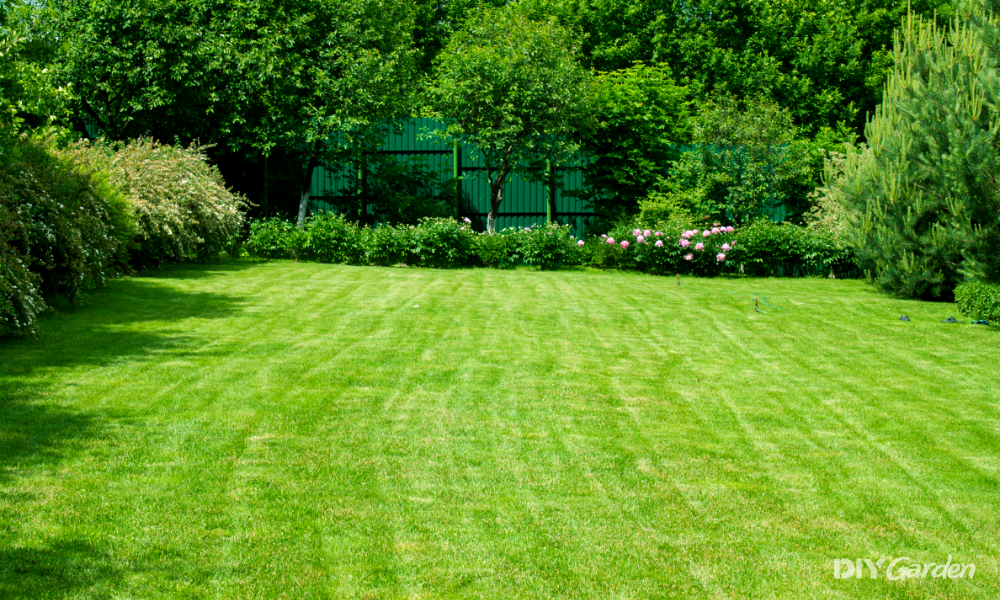
Epsom Salt: How Does it Make Grass Greener?
Before we jump into telling you exactly how to apply Epsom Salt to your lawn, you might like to know why it’s beneficial to plants and how it will help your garden.
Epsom Salt, or magnesium sulphate, is a chemical compound that can benefit your garden in a number of ways.
It contains both magnesium and sulphate which, when applied to plants, help with seed germination and the absorption of crucial nutrients such as phosphorus and nitrogen.
Epsom Salt can be used all around the garden, including on your plants, shrubs, trees and lawn. Many people choose to use Epsom Salt on their houseplants too. One of the reasons that Epsom Salt is a popular fertiliser is that it allows for organic gardening – there are no artificial chemicals in sight.
Applying Epsom Salt to your lawn can make it greener by encouraging lush green growth. It can also help grass seeds germinate. When lawns are deficient in magnesium, they will struggle to capture the sun’s energy, meaning they’ll eventually go yellow or brown. The magnesium in Epsom Salt will aid the production of chlorophyll, which will help make greener grass.
Keep reading to find out exactly how to use Epsom Salt in the garden:
How to Apply Epsom Salt to Make Grass Greener
It’s recommended that Epsom Salt is applied to your lawn during springtime to facilitate growth. It can also be applied during the autumn months. Do not use Epsom Salt during the summer as it may contribute to the growth of weeds.
Applying Epsom Salt to your lawn is extremely easy, here are the 4 steps to follow:
1. Do a Soil Test
Before using Epsom Salt on your lawn, you should do a soil test to check whether your lawn is magnesium deficient.
Soil tests can be purchased online or at the garden centre and will provide information about soil composition and pH level. Purchase one that will highlight if your soil is deficient in any nutrients such as calcium, magnesium, potassium or phosphorus.
If your soil is magnesium deficient, it will likely benefit from an application of Epsom Salts. Sandy soils and acidic soil are more prone to being magnesium deficient.
2. Dilute Epsom Salt in Water
Wear gloves to protect your skin, then create an Epsom Salt solution.
Add Epsom Salt to water using 130 g salt and 5 L of water.
When you get used to using Epsom Salt, you might experiment with your own ratios, but it’s best to start using Epsom Salt in small doses which is why we recommend 130 g per 5 L.
3. Lightly Spray Directly Onto the Lawn
Evenly spray or sprinkle the Epsom Salt solution over your entire lawn. This can be done using either a garden sprayer or a watering can with a rose. Ensure you spread it evenly.
4. Wait, Then Water Your Lawn Thoroughly
Wait a couple of days after applying Epsom Salts to your lawn, then water the whole area thoroughly. Waiting a couple of days will avoid washing the Epsom Salt away before it’s had the chance to permeate the ground. Watering will help grass in general.
FAQs
Will Epsom Salt damage my lawn?
This is a common concern, as it seems counterintuitive to put Epsom Salt on grass.
Whilst putting a layer of regular table salt on your lawn would definitely be bad news, adding Epsom Salt to the garden is different.
This is because Epsom Salt isn’t technically a salt at all. It’s a mineral compound made up of magnesium and sulphate. It may have the same granular consistency as table salt, but it’s not suitable for human consumption. Fortunately, it is suitable for lawns.
So the answer is no, Epsom Salt won’t damage the lawn and will work to improve its health instead!
Are there any disadvantages to using Epsom Salt as fertiliser?
There aren’t many disadvantages to using Epsom Salt on your lawn. Many people believe that its effects are overhyped, but even if this is the case, it won’t damage your lawn if applied as stated, so it’s worth trying.
One of the main reasons people believe Epsom Salt isn’t as effective as the internet hype would have you believe is because many lawns aren’t truly magnesium deficient. Although magnesium is an essential micronutrient for grass, adding Epsom Salt may only help if your soil is truly deficient in magnesium.
Is Epsom Salt good for plants?
Epsom Salt can be used all round the garden, even on your plants.
Containing magnesium and sulphate, Epsom Salt can help with seed germination, make your plants grow bushier and encourage the production of more flowers. It can also boost chlorophyll production and deter pests, including slugs.
It’s worth keeping an eye on plants to see whether they are deprived of the nutrients that Epsom Salts can provide. If the leaves are turning yellow, your plant may need more sulphate. If the leaves are turning yellow between the veins, your plant may require magnesium. Epsom Salt can help with both of these problems.
Do I have to dilute Epsom Salts in water?
If you don’t want to dilute Epsom Salts, you can take the granules and lightly sprinkle atop the lawn. Just make sure to thoroughly water them in – using a garden sprinkler system can work well.
